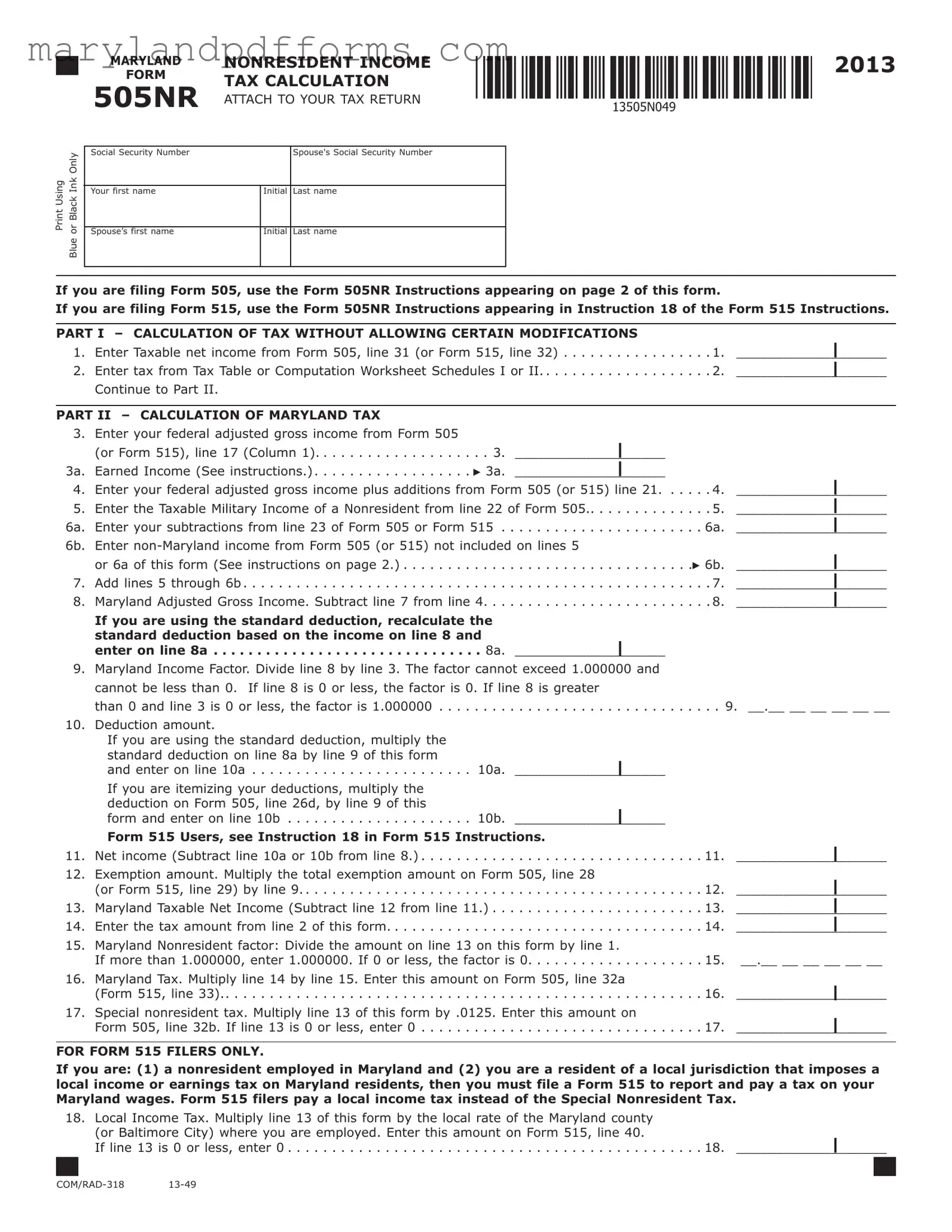Blank Maryland 505Nr Template
The Maryland 505Nr form is a tax calculation document specifically designed for nonresidents who earn income in Maryland. This form helps individuals accurately report their taxable income and calculate the appropriate state tax owed. Completing this form is essential for compliance with Maryland tax regulations, so it is crucial to fill it out correctly.
To begin the process of filing your taxes, please click the button below to access the Maryland 505Nr form.
Fill Out Maryland 505Nr Now
